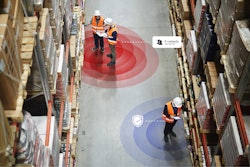
While some healthcare providers continue to face supply chain disruptions, today’s organizations feel better equipped to anticipate and manage ongoing supply challenges than they did at the pandemic’s outset. The reprieve from daily chaos has allowed supply chain teams and the industry to contemplate and plan for healthcare’s future.
Two of the more salient lessons learned from the pandemic is that the healthcare industry can be more flexible and collaborative than ever imagined and quickly implement changes without sacrificing the quality of care delivered to patients. As we look to the year ahead, expect to see healthcare’s digital transformation accelerate, where more investments in modern technologies and data will build a bridge between people and processes to fundamentally change when, where and how care is delivered.
Following are four trends that will facilitate the re-design of care delivery and boost operational efficiency.
Cloud ERP migrations will accelerate
Gartner forecasts the enterprise resource planning (ERP) market will reach $44 billion this year, with much of that growth driven by the adoption of cloud-based systems. In healthcare, the move to the cloud is becoming more mainstream. After more than a decade of investing in systems to improve clinical processes, healthcare executives want to use the cloud to improve business processes and balance patient care outcomes with efficiency. By integrating a cloud-based ERP system with other systems, such as electronic health records, organizations can create a path to operational excellence.
As more migrations to the cloud take place, hospital executives will have the chance to re-think and even redesign existing processes, such as data management. In this new environment, data can be thought of and provided as a service rather than just an internal capability. This is particularly important because as care expands beyond typical clinical settings to retail locations or even a patient’s home, the demand for clean, accurate data will increase. In addition, the integration of cloud-based systems is expected to drive operational excellence not only when business is running smoothly, but also when disruptions occur. For example, if a critical product is back-ordered, the ERP powered by a data service can answer time-sensitive questions about alternative products, sourcing and approvals.
Providers will focus on electronic invoices and payments
As the industry looks to address the financial challenges created by the pandemic, modernizing invoicing and payments has become a priority. Data shows it costs as much as $31 to manually process each invoice and paper check, costing the industry millions each year. Electronic invoice and payment conversations have extended beyond accounts payable teams, as CFOs and CEOs look to facilitate the exchange of payments more expediently.
The industry will build on the automation gains achieved during the pandemic to accelerate the shift from paper to digital invoices. Automation improves invoice accuracy, reduces cycle times and cuts costs. It’s an important step toward building a more agile, resilient supply chain. The efficiency gains result in better, more fluid decision-making around cash management to meet short- and long-term financial goals.
Demand for real-world evidence will soar
In the year ahead, expect a more concerted, collaborative effort among industry stakeholders to turn data into the critical asset it’s meant to be – one that will drive greater financial, operational and clinical performance. Specifically, there’s increasing demand to aggregate patient-reported outcomes and real-world evidence to understand more than the technical outcome of a procedure. This data will be used to improve value analysis so healthcare suppliers and providers can work together to better understand utilization, price, clinical efficacy and product safety. Value analysis teams can then use this data to collaborate with operational and clinical leaders to make decisions that produce optimal patient outcomes.
Digital health models will continue to mature
As consumers demand healthcare services that are more accessible, affordable and personalized, care beyond the four walls will continue to mature. It’s no longer about using the same process at a different care site. The intent is to create a new model that improves access to care and drives better outcomes across all sites.
Telehealth exemplifies how the care delivery model is being revolutionized. Virtual healthcare visits skyrocketed during the pandemic. The near-term benefits were obvious -- it reduced the spread of the virus while enabling patients to get advice and care when needed. A recent McKinsey report found telehealth appears to be here to stay, stabilizing at levels 38 times higher than before the pandemic. Further, Forrester found that nearly one-third of all patients who received remote care during the pandemic expect to do so in the future.
Remote monitoring also gained wider acceptance by physicians and patients during the pandemic. Some hospitals used the technology to track symptoms in the Coronavirus disease (COVID-19) among patients quarantined at home. Even more interesting, remote monitoring is being used to improve the way physicians treat chronic conditions, such as heart failure among cardiac patients, enabling better management of symptoms and reduced need for hospitalization.
Expect to see more technologies emerge that further support care extending beyond the four walls of the hospital. The market is ripe for this change, as evidenced by digital health funding, which for the first half of 2021 exceeded the total funding for 2020. For example, new digital and remote case support solutions can improve collaboration and knowledge-sharing between providers and suppliers, making procedures more efficient and repeatable while improving outcomes.
COVID-19 may have exposed the healthcare industry’s technological shortcomings, but it also demonstrated that healthcare can be flexible, collaborative and innovative in real-time without sacrificing the quality of care. The pandemic has also changed the way consumers think about healthcare, particularly how it’s accessed and experienced. Healthcare’s mandate during the coming year is to drive greater adoption of more automated, modern processes and technologies to ensure that both the individual needs of patients as well as the industry’s operational and financial goals are being met.
Click here to hear more about different technologies in the healthcare supply chain:




















